Kombucha just sort of worked its way into my life as a fun experiment to try. I didn’t expect it to become such an integral part of my day-to-day existence! I laugh to myself thinking of how it started unexpectedly as a good friend in town was hosting a meeting for us.

While reading back minutes to the group I found my eyes drifting to the kitchen counter several times. Her glass bowl full of clear brown liquid submerging what looked to be stacks of crepes was drawing attention from a few of us. “Oh that!” she replied when one of us finally gave into the temptation to interrupt. She explained her entire process and confessed to her plans of offloading some of her SCOBYs to us at the end of the meeting. I was happy to take one and give it a try but wasn’t sure I’d be dedicated enough to be keeping the process going.
Go figure; eight years later I’m still religiously feeding my kombucha SCOBY and collecting the fermented drink every two weeks like it’s my child! Often to keep it simple I would find myself simply squeezing a bit of lemon with a tsp of sugar into my airtight bottle just to get that fizz happening. That same old combination can get boring over time so when I have more ambition it is so much fun to get creative with the process and play around with all kinds of different fruits, herbs, teas and more. These recipes are by no means complex and you may find them simple yourself. They are a helpful starting point when you find the process intimidating or are just looking for your own inspiration.
I tried my best to keep that intro short and sweet with a hint of warning about how addictive the ritual can be. You think it can’t happen to you! Without any more delay, here are some of my go-to recipes that keep both my gut and tastebuds happy:
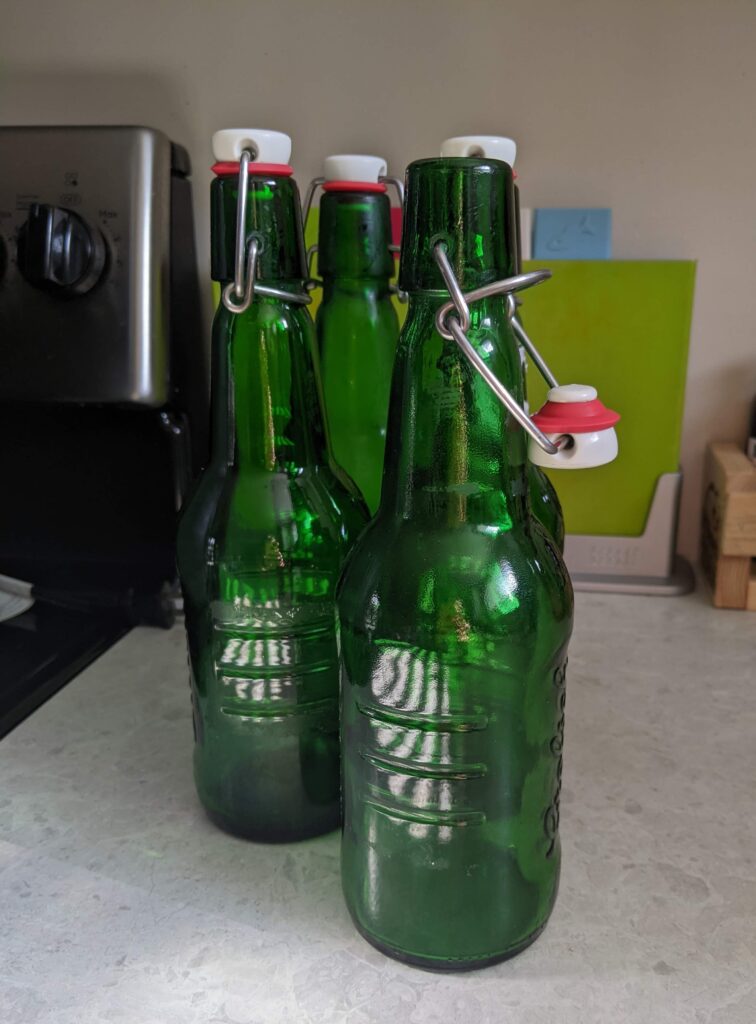
Each of these combinations are for a 500ml strained kombucha liquid. I like to use bottles with a flip-top lid for my second ferment. They make it easy to pop open the lid once a day to release the pressure. I find they are ready to go in the fridge and enjoy after about one week, give or take, depending on how warm it is in my kitchen.
If you’re new to creating a second ferment, you can read up on the process here. You can always reduce or omit the cane sugar in these blends. The fructose in the fruit is often good enough to sweeten. The cane sugar does help to increase the fizziness of the beverage, however, so you can add to your desired sweetness or fizz.
Ginger Blueberry
- 1 Tbsp cane sugar
- 1 tsp fresh ginger
- 2 Tbsp blueberries (fresh or thawed from frozen)
This combination is one I find myself making the most often. I find the fresh ginger to be so bold and along with the blueberries I feel good knowing I have an antioxidant powerhouse!
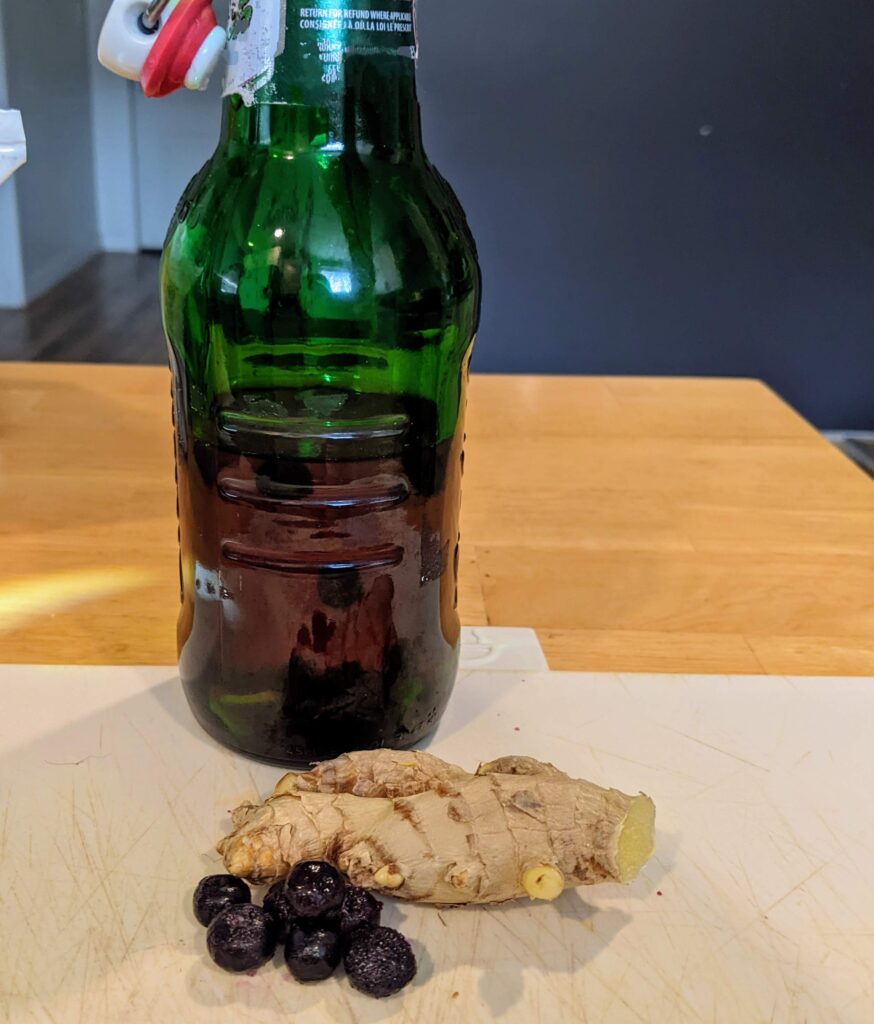
The 1 tsp of ginger is plenty to flavour the whole beverage and I don’t like to go any higher than that amount. Having high volatile oil content, the ginger could act as an antimicrobial against the healthy bacteria if too much is added.
Strawberry Mint
- 1 tsp cane sugar
- 2-3 Tbsp chopped strawberries (fresh or thawed from frozen)
- 4 fresh peppermint or spearmint leaves
This combination is particularly refreshing in the summer and I love using fresh strawberries and mint when they are in season. I find that the strawberries are so sweet that I don’t necessarily need the cane sugar but it helps to get the drink more fizzy.
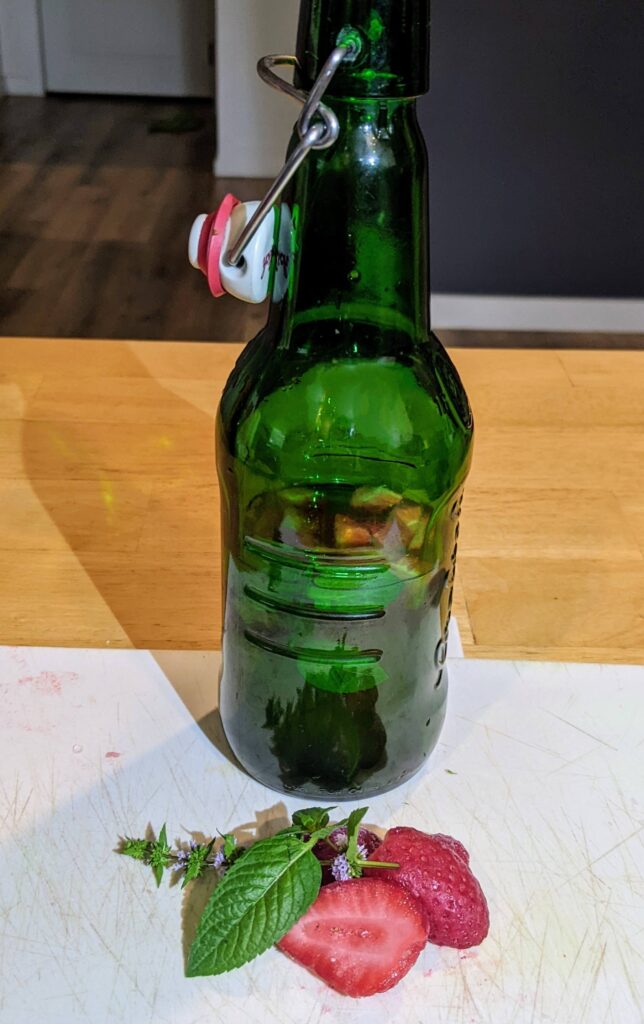
Just as with the ginger I don’t like to add too much of the fresh mint due to the high volatile oil content killing off the healthy bacteria in the liquid. Fortunately with these types of herbs, a little goes a long way!
Orange or Grape “Soda”
- ¼ cup pure orange juice or grape juice
The sugar content in these fruit juices is so high that there is no need to add any extra cane sugar. If you take them to the point of being extra bubbly the resemblance to soda is almost uncanny. Helpful for those trying to switch from the carbonated beverages.
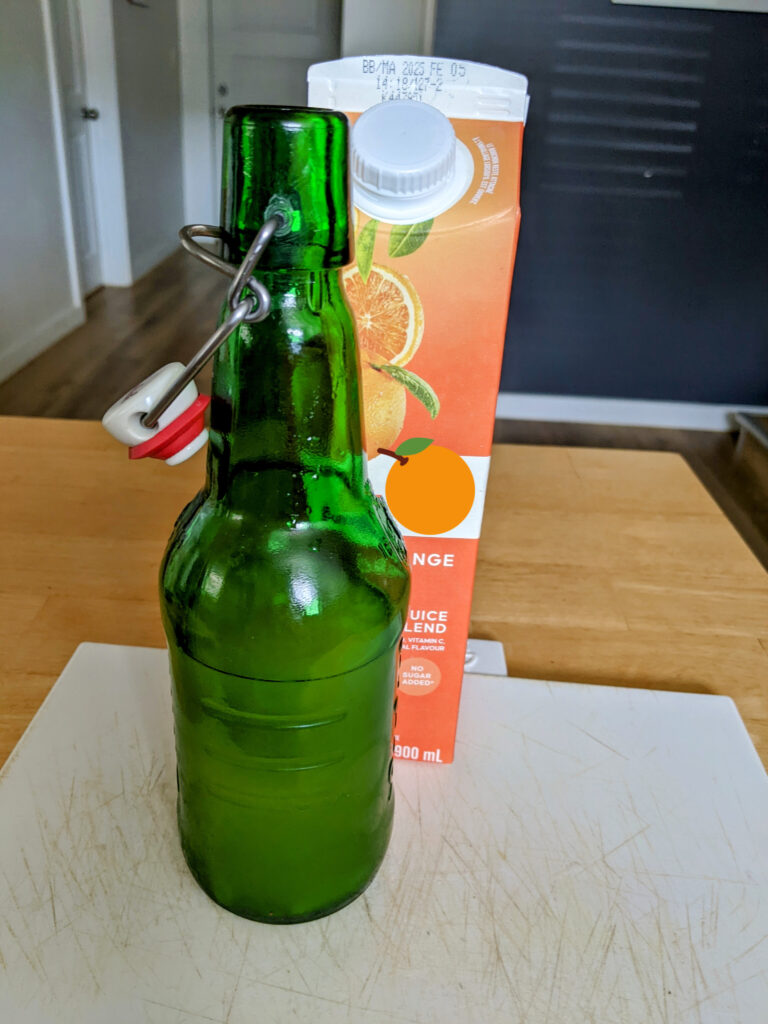
Lemon Lime
- 2 Tbsp fresh squeezed lemon juice
- 2 Tbsp fresh squeezed lime juice
- 2 Tbsp cane sugar
I particularly like this combination because I find it resembles Sprite© so it’s another great alternative if this is your soft drink of choice.
Cherry Hibiscus
- 1 tsp hibiscus petals
- 1 Tbsp chopped and cherries (fresh or frozen)
- 1 Tbsp cane sugar
This combination packs a load of flavour and reminds me of fruit punch. Again, I find it extra refreshing in the summer.
Mojito
- 2 Tbsp fresh squeezed lime juice
- 4 fresh peppermint or spearmint leaves
- 2 Tbsp cane sugar
Pretty self explanatory; just replacing the alcohol portion of a mojito with the kombucha liquid and letting it enhance the flavours even more as it ferments.
Tropical
- 3 Tbsp fresh pineapple, chopped into small slices
- 2 Tbsp fresh mango, chopped into small slices
- 1 Tbsp coconut water
If you love tropical fruits, this blend is for you! I find the pineapple in particular is so sweet there is no need to add sugar to this blend. It fizzes up just fine without.
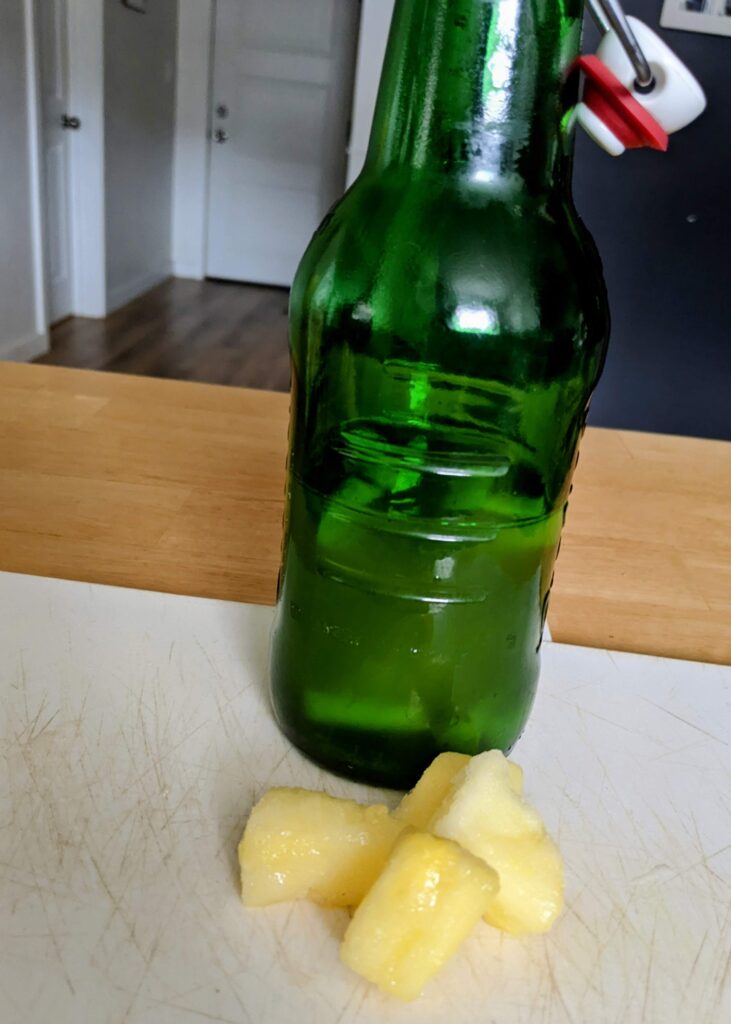
Root Beer
- 2 cups cold water
- 2 Tbsp sarsaparilla
- 2 tsp anise seeds
- ¼ tsp cinnamon cassia bark
- ¼ tsp birch leaf
- 2 Tbsp raw cane sugar
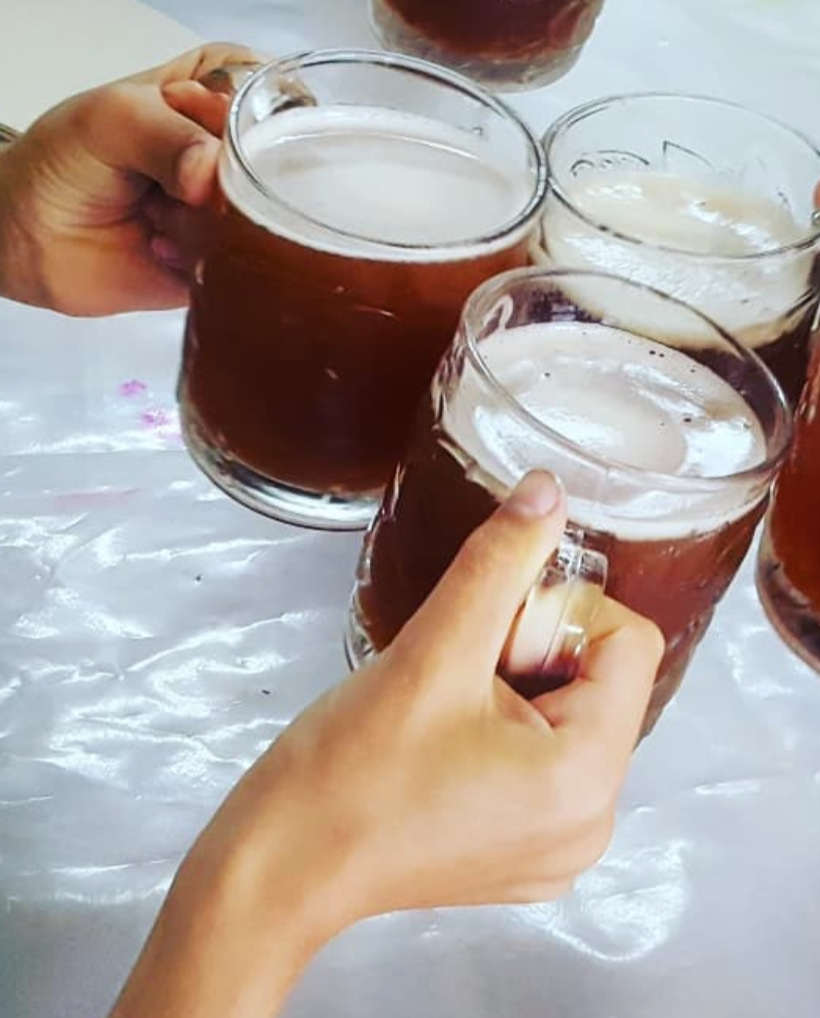
This blend requires more preparation as you need to make a syrup beforehand. It can also be a little more challenging to track down the ingredients but they can often be found at a local health food store. To prepare, add the sarsaparilla to 2 cups cold water in a sauce pan. Cover and bring to a boil then let it simmer for 15 minutes. Next add the anise seeds, cinnamon bark and birch leaf and cane sugar. Now remove the lid and simmer for 15 – 30 minutes to reduce down to about ¼ cup. After the 10 minutes, strain out the herbs and chill for at least 1 hour. Once cold add this syrup to the kombucha and carry on with the second ferment, letting it develop the fizz over the week. It has a wonderful root beer flavour to satisfy the craving!
So… these flavour combinations are not nearly as creative as you can get when it comes to making kombucha. When using fresh herbs, edible flowers can add an extra special layer of dimension to your drink. Consider fresh rose petals, elderflowers, chamomile, lavender or violets when combined with fresh fruit. The beauty of kombucha is that while its live bacterial culture is breaking down the ingredients I’ve considered the possibility that it is releasing more of the flavour molecules. I’m needing some kind of explanation for how the fruit and herbal flavours have been enhanced tenfold in my fermented beverage.
Be sure to have fun with the experimenting process. Take notes, do lots of taste testing and enjoy!
All content contained herein is intended for general information purposes and is not to be considered professional medical advice. Contact a reputable healthcare practitioner if you are in need of medical attention.


Leave a Reply